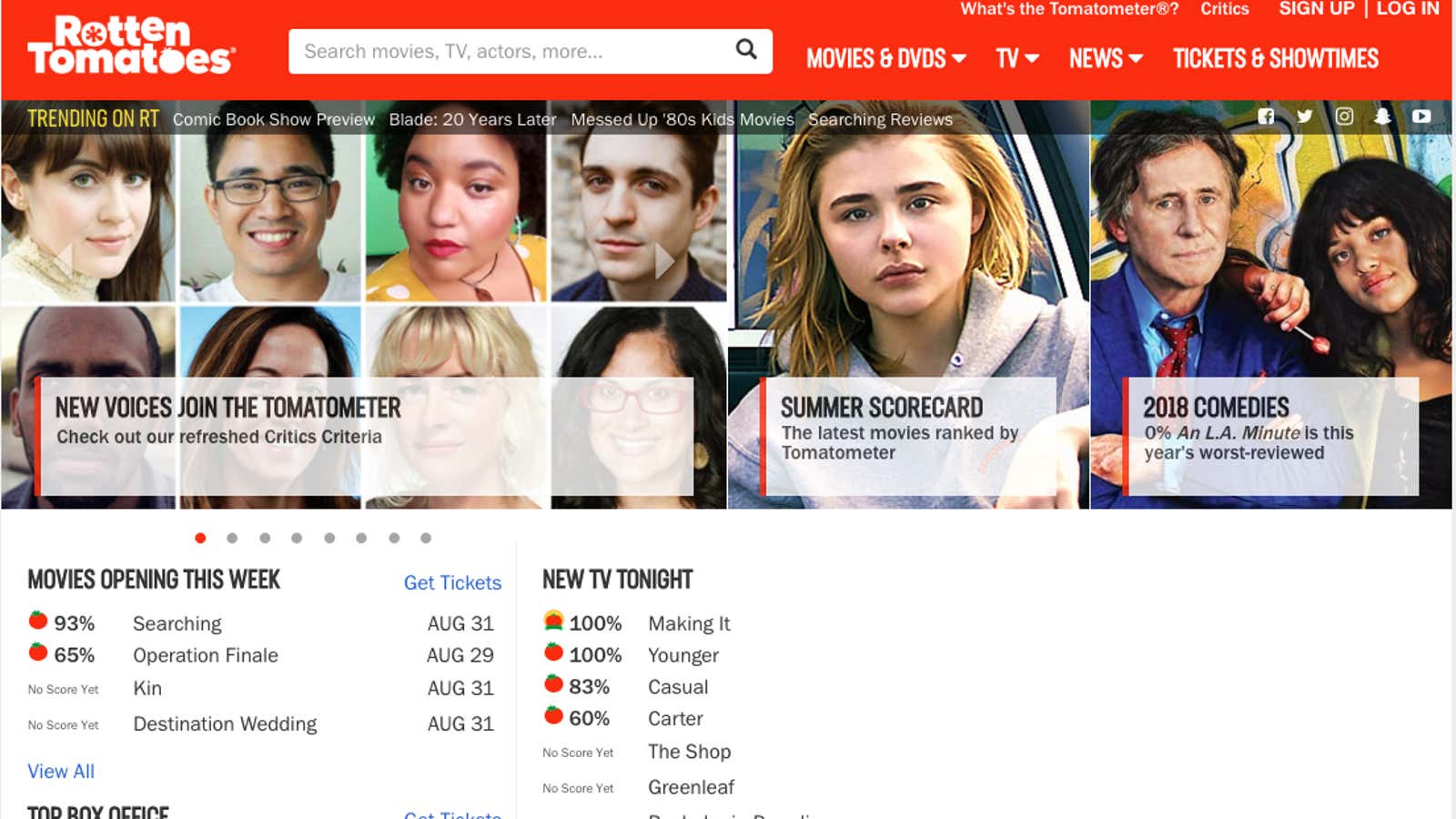Rotten Tomatoes is opening itself to more reviews.
The US-based movie-review aggregation platform is changing the criteria for the critics that fuel its Tomatometer, which distills movie and TV reviews from approved critics into a percentage of positive (“fresh”) reviews and negative (“rotten”) ones. The scores are widely cited by media outlets, Hollywood studios, and platforms like iTunes and Fandango where people buy movies and movie tickets.
Rotten Tomatoes hopes to balance the perspectives on TV shows and films with its new strategy. It said today (Aug. 28) an individual critic’s qualifications and body of work will have more weight more than their ties to a particular publication when determining whether to grant them Tomatometer-approved status. The platform will look at things like the insights reviewers offer, the audiences they serve, the quality of their work, and their dedication to the craft. And it will also consider reviews in other media beside print, such as podcasts and online videos. The full guidelines for critics are on Rotten Tomatoes’s website.
The company said it added more than 200 Tomatometer-approved critics recently and will be adding hundreds more this year. It’s also highlighting some of the new critics on the site. Quartz reporter Adam Epstein, who applied to be a Tomatometer-approved critic twice last year, was just offered that status this month. His reviews are now included in the Tomatometer.
The push to diversify and be more transparent about the voices on Rotten Tomatoes comes after it was criticized by some in the movie and TV industries.
Research has shown that the majority of reviews of top films on Rotten Tomatoes are written by white males. Actresses such as Meryl Streep and Reese Witherspoon have questioned how many women and people of color are represented. And rival services like Cherry Picks have emerged to spotlight female critics.
Fans of film criticism have argued for years that Rotten Tomatoes also takes too narrow of an approach to review aggregation. The Tomatometer, which shows the percentage of reviews deemed positive or negative by either the reviewer or Rotten Tomatoes staff, effectively eliminates nuance in criticism. (There is a lesser-known metric on Rotten Tomatoes that shows how the movie performed with critics on a scale of 1-10.) Not all movies are judged on the same scale; scores for some titles are based on just five reviews—the minimum number to generate a Tomatometer score—while others have hundreds. And all the reviews are weighed evenly. Competitors such as Metacritic place a higher value on reviews from respected critics.
The sometimes stark contrast between critics and audiences on Rotten Tomatoes has become apparent in the last year as well. Movies that critics abhorred like Netflix’s Bright hit with audiences and critical darlings like Hereditary underwhelmed viewers. Netflix said reviewers may be out of touch with mainstream viewers.
Bringing more voices to the table won’t fix all of these problems. Still, it gives more people the opportunity to share their perspectives with mainstream audiences—and have those reviews be counted.
